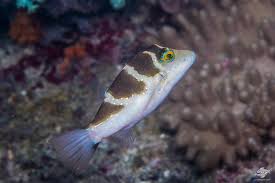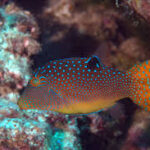Dragons in Myths of Creation and Cosmic Protection

Dragons, one of the most iconic and powerful creatures in mythology, have captivated the human imagination for centuries. In many cultures, dragons are not merely fearsome beasts but beings of profound importance, linked to the creation of the universe and the protection of cosmic order. In Eastern and Western mythologies alike, dragons play critical roles in shaping the world and ensuring the balance of natural forces. This article explores the role of dragons in various myths related to the creation of the universe and their role as protectors of the cosmos. We will dive into the symbolism, the diverse roles dragons play in these myths, and their enduring legacy as cosmic guardians.
The Role of Dragons in Creation Myths
In numerous ancient civilizations, dragons are not just symbols of destruction but also of creation. Their connection to the origin of the universe can be found in many mythologies, where they serve as cosmic entities responsible for shaping the world or instigating the forces of life and death.
1. Chinese Creation Myths: The Cosmic Dragon
In Chinese mythology, dragons are closely associated with the fundamental elements of creation and the harmony of the universe. The Chinese dragon, known as Long (龙), represents strength, vitality, and the union of opposites. Unlike the destructive dragons of Western myths, Chinese dragons are seen as benevolent beings, often responsible for creating and maintaining cosmic balance. In particular, the Pangu myth stands as one of the most prominent Chinese creation stories.
According to this myth, the universe began as an immense, chaotic egg. Inside this egg was Pangu, a giant being whose breath and actions were said to have separated the heaven and the earth. Pangu is often depicted as a dragon-like creature with a serpent’s body, symbolizing both creation and protection of the universe’s order. As Pangu grew, his body transformed into the elements of the earth: his breath became the wind, his voice the thunder, his left eye the sun, and his right eye the moon.
While the Pangu myth may not involve a literal dragon, the dragon’s influence is evident in the way the dragon-like serpent figure represents the forces of life and order. The dragon’s association with creation is also found in the imagery of flood dragons, which were believed to control the rivers and seas, ensuring that the waters nourished the earth and did not overflow and destroy it.
2. Norse Mythology: Nidhogg and the Cosmic Tree
In Norse mythology, the dragon plays a key role in the maintenance of the universe, specifically as part of the world tree, Yggdrasil, which connects the nine worlds of Norse cosmology. Among the many creatures associated with Yggdrasil, Nidhogg, a dragon, is one of the most significant. Nidhogg resides at the base of Yggdrasil, gnawing at its roots.
Though Nidhogg’s actions might seem destructive, they represent the continuous process of life, death, and rebirth. The dragon’s biting at the roots of the tree serves as a metaphor for the constant cycle of renewal that is required for the universe’s balance. This cyclical process is crucial in Norse thought, where the destruction caused by Ragnarok (the end of the world) is also a precursor to the creation of a new, more peaceful world.
Nidhogg’s role in Norse mythology is significant as it highlights the paradoxical nature of dragons in creation myths—they can be both destructive and essential to the preservation of cosmic harmony. The dragon’s actions ensure that the world remains in a constant state of change, thereby preventing stagnation and disorder.
3. Mesopotamian Myths: Tiamat and the Birth of the Cosmos
In the ancient Mesopotamian myth of creation, Tiamat, the primordial dragon-like goddess of saltwater, plays a central role in the formation of the world. In the Enuma Elish, the Babylonian creation epic, Tiamat is depicted as a vast, chaotic entity whose body contains the potential for both creation and destruction. The story begins with the battle between Tiamat and the god Marduk, who represents order and civilization.
Marduk defeats Tiamat and splits her body in two, using one half to create the heavens and the other half to form the earth. In this myth, Tiamat’s dragon-like nature is symbolic of the untamed forces of chaos, which Marduk must overcome to establish the order of the cosmos. Although Tiamat is destroyed, her essence persists in the form of the very fabric of the world. This myth reflects the duality of dragons in creation myths: they embody the raw power of the cosmos, which must be tamed and structured to bring about harmony.
Tiamat’s connection to water is also symbolic, as water in many creation myths is seen as the primordial substance from which all life originates. In this sense, Tiamat’s body is both the destructive force that must be controlled and the generative force that gives birth to the world.
Dragons as Protectors of the Cosmos
Beyond their roles in the creation of the world, dragons are often seen as the cosmic protectors who safeguard the universe against chaos, evil, and destruction. They are tasked with ensuring that the forces of nature remain in balance and that the divine order is upheld.
1. Chinese Dragons as Cosmic Guardians
In Chinese folklore, the dragon is often depicted as a guardian of the natural world, overseeing rivers, seas, and the weather. The Dragon Kings, who are rulers of the seas and waterways, are prominent figures in Chinese mythology. These dragon kings, usually depicted with serpentine bodies and the ability to control water, ensure that the world remains in balance by preventing natural disasters and regulating the flow of water.
The Dragon Kings are also linked to the protection of the emperor, who is seen as the earthly embodiment of the celestial order. During royal rituals and festivals, the emperor would invoke the Dragon Kings to protect the empire from natural disasters like floods, droughts, and storms. The dragons were viewed as benevolent forces that helped maintain harmony between heaven and earth.
2. The Heroic Role of Dragons in Western Myths
In many Western mythologies, dragons take on the role of protectors or guardians of great treasures, often associated with wisdom or divine knowledge. One of the most famous examples is the myth of St. George and the Dragon, in which the dragon represents an evil force that must be defeated for the protection of a kingdom. In this context, the dragon is not a cosmic guardian but rather a creature to be vanquished in the name of good.
However, there are also examples of dragons serving as protectors in Western traditions. In Celtic mythology, for example, dragons are seen as guardians of sacred lands or treasure hoards. In these cases, the dragon’s role as a protector is tied to its association with primal forces and ancient wisdom.
3. Dragons as Protectors in Hindu and Buddhist Mythology
In Hindu and Buddhist traditions, dragons—often referred to as Nāgas—are serpentine deities that are believed to protect the earth and its inhabitants. Nāgas are often seen as benevolent beings, offering protection to the sacred places and guarding the treasures of the gods. They are also associated with water and rain, playing a key role in agricultural prosperity.
In some Buddhist texts, dragons are depicted as protectors of the Buddha and his teachings. They are believed to guard sacred scriptures and holy relics, ensuring that divine knowledge remains safe from destruction. In this way, dragons serve as cosmic protectors, safeguarding spiritual and physical realms alike.
Symbolism of Dragons as Cosmic Creators and Protectors
The dragon’s dual role as both a creator and protector of the universe is central to its symbolism in many myths. As creators, dragons are linked to the formation of the world, the generation of life, and the balance of cosmic forces. They are often seen as mediators between chaos and order, ensuring that the universe remains in harmony.
As protectors, dragons are often tasked with defending the natural world from destruction, ensuring that divine order is preserved. They are symbols of power, strength, and resilience, embodying the forces that maintain the stability of the cosmos. In many traditions, the dragon represents the unity of opposites—creation and destruction, life and death, order and chaos—illustrating the complexity of the universe.
Conclusion
Dragons in myths of creation and cosmic protection embody the ancient human understanding of the universe as a complex, interconnected system of forces. From Chinese dragons that control water and the weather to the Mesopotamian Tiamat, whose battle with Marduk shapes the cosmos, dragons are integral figures in the creation of the world and the maintenance of cosmic order. Whether as creators, protectors, or guardians, dragons serve as powerful symbols of balance, strength, and divine authority, reflecting humanity’s ongoing quest to understand and protect the forces that govern our world. The legacy of dragons as cosmic figures continues to captivate and inspire, serving as timeless reminders of the power of myth to explain the mysteries of the universe.

